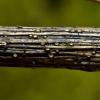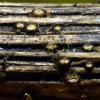
25-05-2025 11:51
Me mandan el material de Galicia, (España) reco

25-05-2025 08:12
Sylvie Le GoffBonjour. Puis avoir votre aide pour confirmer ou i

24-05-2025 12:30
Karen PoulsenHello, I found this on straw in water at lake sho

24-05-2025 12:06
Karen PoulsenHello, I found these Coelomycetes among several

21-05-2025 17:28
 éric ROMERO
éric ROMERO
Bonjour Tous, Avec la bonne fiche cette fois (mer

23-05-2025 13:38
 Andgelo Mombert
Andgelo Mombert
Dear all, I'm looking for material from the USA of

23-05-2025 09:48
Hello.A probable Diplodia located on a small Pista

19-05-2025 09:42
Hello.An ascomycete photographed on April 20, spro







